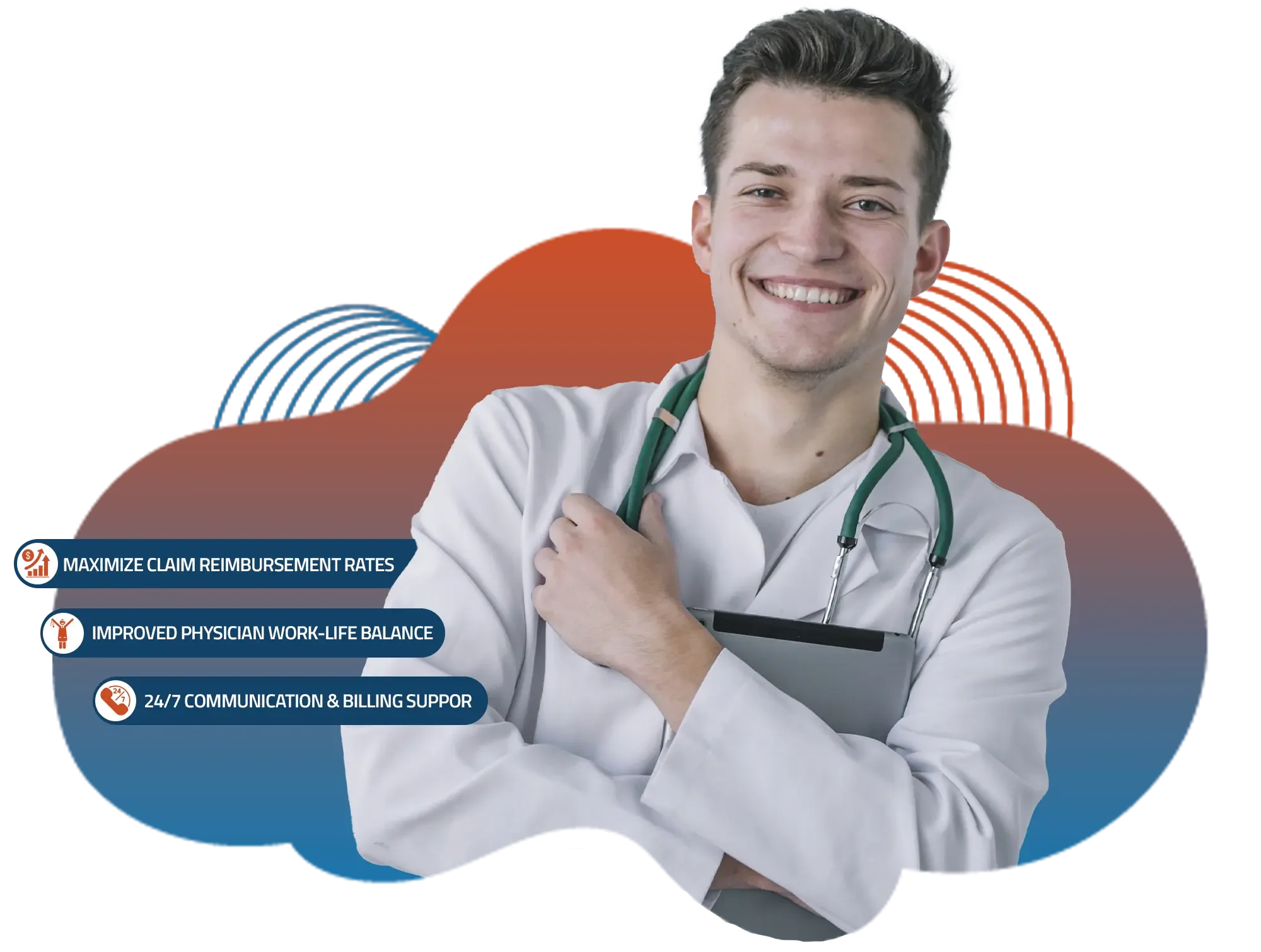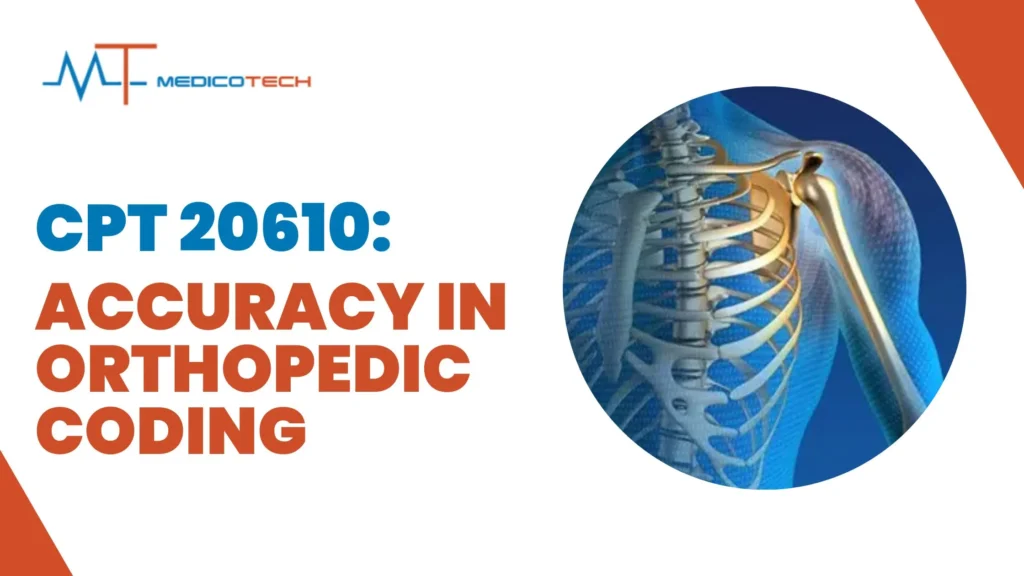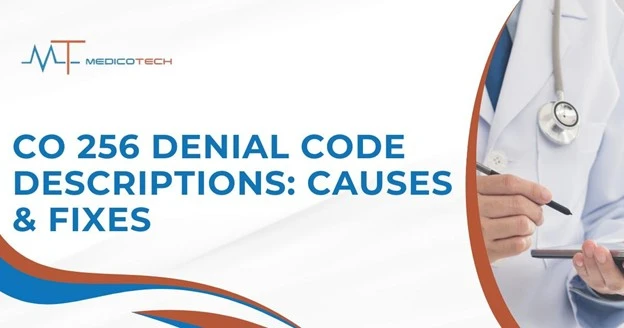CPT code 20610 is considered one of the most common procedure codes in the orthopedic and pain management billing. It symbolizes arthrocentesis; a procedure that entails the aspiration and/or injection of a major joint or a bursa. The process aids in alleviating pain in joints, decreasing inflammation, and enhancing the movement of patients with most musculoskeletal disorders.
The correct coding of CPT 20610 will guarantee a correct reimbursement, a right adherence to the payer requirements, and a reduction in the chances of a claim denial. Knowledge of the time and application of this code is crucial with the help of physicians, coders, and billing specialists.
Overview of Arthrocentesis
Arthrocentesis is a medical treatment that involves removing surplus fluid in a joint or injecting medication in a joint. The method can be used in diagnosis and treatment. The aspirate obtained in the joint, when used in a diagnostic manner, may help in determining when there are infections, gout or even inflammatory diseases. It can be used therapeutically to de-swell, relieve pain and increase the comfort of movement in a patient.
The surgery is usually carried out on large joints like the shoulder, the hip or the knee. It is less invasive, has reduced recovery time and has quick pain relief effect to patients with chronic joint pains or inflammation. Arthrocentesis is a recognized technique with the ability to treat such pathological conditions as arthritis, bursitis, and thus is a common orthopedic and pain management procedure.
Significance of Orthopedic and Pain Management Practices
Arthrocentesis plays a critical role in patient care in orthopedic and pain management background. Doctors use it to recognize and treat a number of issues related to the joints instead of surgery. Removal of effusion can significantly alleviate pain in a patient with arthritis or a patient with long-standing joint effusion. When corticosteroids medicine is injected, it offers beneficial effects of specific anti-inflammatory treatment and long-term analgesics.
On the part of providers, this process increases clinical effectiveness and helps make the right diagnosis. To billing experts, it is essential to know the proper coding of arthrocentesis under CPT 20610 to make sure that the reimbursement of practices is within the payer requirements.
What is CPT Code 20610?
Definition and Purpose
CPT 20610 is interpreted as Arthrocentesis, aspiration and/or injection, major joint or bursa (e.g., shoulder, hip, knee joint, subacromial bursa); not ultrasound guided.
This single code is used when a physician either aspirates joint fluid, injects medication, or performs both on the same joint during one encounter. Both activities are considered part of one service and should not be billed separately.
It is one of the most frequently used procedural codes in orthopedic Medical billing because it applies to major joints, which are common sites of pain and inflammation in adult and elderly patients.
Description of the Procedure
During arthrocentesis, the physician first sterilizes the skin over the affected joint and may administer a local anesthetic to reduce discomfort. A sterile needle is then inserted into the joint cavity. Depending on the purpose, the physician either removes synovial fluid or injects medication such as corticosteroids or anesthetics. After the needle is removed, the site is dressed, and the patient is typically able to return home immediately.
The procedure is quick and safe, often taking less than fifteen minutes. Despite its simplicity, it provides critical information for diagnosing joint diseases and immediate relief for patients experiencing pain or stiffness.
Common Joints Treated (Shoulder, Hip, Knee, etc.)
CPT 20610 is not applicable on minor joints and bursae. The prevalent ones are the shoulder, hip, and the knee. It is also applicable when injecting subacromial bursa in case of shoulder impingement or bursitis. Smaller joints like fingers, toes or wrists entail different CPT codes. Properly coding of the joint guarantees proper coding of the joint and reimbursements.
CPT 20610: Not a Surgical Procedure
Explanation of Non-Surgical Classification
CPT 20610 is a non surgical or medical procedure. It implies placing a needle in the joint cavity instead of an opening with a subsequent incision or a repair of tissue. Since it is not based on any form of operative method, it is not regarded as a surgery according to insurance regulations used by Medicare or commercial carriers. Rather, it is a diagnostic or treatment process meant to alleviate the symptoms or or procure diagnostic content.
Outpatient Nature of the Procedure
The process is normally performed in outpatient or in office practice like orthopedics clinics, rheumatology offices or in ambulatory centers. It is easy to the extent that it does not necessitate hospitalization and a protracted rehabilitation process. Patients usually feel relieved hours later and can easily resume their normal life in a short time. The cost-effectiveness of the service is attributed to the outpatient nature of the service to the patients and the healthcare systems.
Specialists Who Perform Arthrocentesis
Different specialists have the right to carry out arthrocentesis. These are orthopedic surgeons, rheumatologists, sports medicine doctors, pain management and in certain instances, primary care doctors that are properly trained. All specialists conduct the procedure due to certain clinical reasons, although they have to comply with the same documentation and billing requirements that are related to CPT 20610.
When to Use CPT Code 20610
Medical Necessity and Clinical Indications
Only in case of a medically necessary service, CPT 20610 should be reported. Common causes are too much fluid in the joints, inflammation, arthritis or suspected infection. It could also be carried out in the case of gout or pseudogout in order to detect the presence of urate crystals in the synovial fluid. The patient needs to have a clear description as to why the procedure was performed and its benefits in the medical record. Payers might refuse to pay without an adequate reason.
List of Arthrocentesis Common Conditions
Arthrocentesis is often done by physicians on patients complaining of arthritis, bursitis, synovitis, and joint effusion. In certain situations, it is applied in the diagnosis of septic arthritis or crystalline diseases. The surgery can also be performed to inject drugs that slow down swelling and pain. The diagnosis and treatment objectives are properly documented which guarantees handling of claims.
Documentation Requirements
To be compliant and have reimbursement, proper documentation is obligatory. It should be indicated in the clinical notes the precise joint that was treated, did the procedure include aspiration or just injection, substance injected, and dosage administered. In case of the utilization of ultrasound guidance, it should be stated directly as well as a saved image or a report. They must include the signature and the date of service of a provider. Comprehensive records do not only facilitate the assertion, but also safeguard the provider on account of audit.
CPT 20610 Procedure Details
Step-by-Step Process
The process entails the positioning of the patient such that the joint is accessible with ease. It is sterilized and a local anesthetic can be applied. The practitioner will insert a needle that is sterile into the jointing cavity in order to drain the fluid or to inject medication. Once the needle has been pulled off, sterile dressing is put in place. The patient can get instant relief of swelling or pain. It is fast, effective and can be done with minimum risk in case it is conducted by qualified staff.
Aspiration vs. Injection
Aspiration consists of the removal of the synovial fluid that removes pressure in the joint and provides the fluid to laboratory tests. Injection implantation is done into the joint space to relieve the discomfort and inflammation via the injection of medication, corticosteroids, anesthetics, and hyaluronic acid into the joint space. When both are done concurrently on the same joint, they are billed as a single CPT 20610.
Use of Ultrasound Guidance (Difference between 20610 and 20611)
CPT 20610 is used where there is no ultrasound guidance on arthrocentesis. When the technique applied to enhance better needle placement is ultrasound the code is correct and it is 20611 containing imaging guidance. The medical record should have an actual indication that it was done under ultrasound guidance and the image or report should be stored. Lack of this documentation in billing 20611 may cause denials.
Coding and Billing Guidelines for CPT 20610
Proper Coding Practices
CPT 20610 is to be charged once in a joint, and once a joint. In the case of several joints being treated, the joints can be reported individually with a suitable modifier. The process of joint treatment should be well documented on which joints were treated and why it was done. The providers should also guarantee that there is medical necessity supported by the diagnosis code.
Predominant Modifiers (e.g. Modifier 50 when it comes to Bilateral Procedures)
Modifiers exchange a particular information with payers and avoid unneeded denials. The modifier 50 applies in cases where the procedure of arthrocentesis is carried on each side of the body i.e. the two knees. Modifiers RT and LT are applied to define what side (right or left) the procedure was conducted, and 59 is used to indicate the procedure on other joints conducted in the same visit. Accurate use of modifiers is useful in upholding billing accuracy and standards.
Payer and CMS Guidelines
CPT 20610 has clear guidelines on how it can be billed by both CMS and the private payers. The medical necessity must be properly documented and should have a valid code of diagnosis. In case a medicine was given to the patient, the drug should be billed under its specific HCPCS code. Other payers also demand more information, O.K. how much medication was taken or was imaging utilized. These guidelines will guarantee an uncomplicated reimbursement to the insurers and minimises the chances of claim rejection.
Reimbursement and Coverage Considerations
Medicare and Individual Recently Purchased Insurances
CPT 20610 is billed differently in Medicare and other insurance providers though the majority of insurance providers will consider CPT 20610 a covered procedure provided that it is medically necessary. Medicare regards the payable service under the physician fee schedule to be CPT 20610 with documented proof of a legit basis of aspiration or injection. This involves either the occurrence of joint effusion, inflammation, or pains that have to be intervened on.
The same applies to the private insurers, who could also possess other documentation or pre-authorization needs. Indicatively, evidence that all forms of conservative treatment, including oral medication or physical therapy was tried, is a requirement of some commercial payers before arthrocentesis is done. Also, the providers must make sure to read the special payer policy to ensure that the coverage criteria, the diagnosis codes, and documentation standards have been met, and then submit a claim.
Issues that influence Reimbursement
CTP 20610 is prone to several factors that affect its reimbursement rates. The reason is that the geographic location is a major factor; Medicare pays more depending on the local cost-of-living considerations. Reimbursement amounts can also be influenced by the specialty of the provider, the location where the provider is based and whether the provider participates with the payer or not.
Correct use of modifiers, correct diagnosis coding, and documentation of medical necessity is the best solution to achieve full payment. Where using ultrasound guidance, the right code (20611) should be reported as opposed to 20610 and saved ultrasound image or report should be carried in the documentation. Absence of such information may result in underpayment or claim defeat.
Avoiding Claim Denials
Rejections of claims under the CPT 20610 usually occur due to unfinished or wrong documentation. To avoid this, the providers have to indicate the specific part of the joint addressed, the cause of the operation and the fluids being aspirated or injected. It should be also noted in the chart note whether it was therapeutic or a diagnostic service, or both.
In the event of multiple joints being treated, then there can also be denials with omissions of modifiers. The following precautions will ensure that right (RT), left (LT) and bilateral (50) modifiers are used correspondingly and promote the clean submission of claims. Teaching the billing staff about payer-specific regulations is yet another approach to minimizing denial rates and delays in reimbursement.
Common Coding Errors and How to Avoid Them
Inappropriate Joint Classification
Most common mistake in coding CPT 20610 is to classify the size of the joint. Only major joints (shoulder, hip or knee) are considered by this code. Smaller joints such as the wrist or ankle should not be used with 20610 and this is likely to get a denied claim. Smaller joints are billed with either CPT 20600 or 20605 according to the category of the joint. Identifying the correct type of joint made puts correct coding and a conforming of payer rules.
Missing Modifiers
The other error is not utilizing the modifiers when there is more than one joint dealt with in a certain session. An example of this is that when both knees are injected, the claim should have modifier 50 that shows that this is done as a bilateral procedure or that the claim should include 20610 twice with prefix RT and LT in front of the code. The absence of modifiers may result in the errors of duplication of claims or underpayment. Correct use of them should have clear codes of which joints were treated and the claim should be an indication of the extent to which services were carried out.
Documentation Inconsistencies
Unfinished or infrequent record keeping is one among the primary causes of postponement and rejection of claims. Medical record should state the reason as to why the procedure is carried out, which joint is actually being treated and those which are aspirated, injected or both. Where ultrasound guidance is employed, then the same should be recorded with an image accompanying such as stated. The plan to match the chart notes, billing forms, and the diagnosis codes will remove discrepancies and facilitate the effective claims.
CPT 20610 vs. Related Codes
Comparison with CPT 20605 and CPT 20611
Whereas CPT 20610 is applied in major joint, CPT 20605 and CPT 20611 present a similar procedure on various joint sizes or situations. CPT 20605 applies to arthrocentesis of intermediate joints, e.g. the wrist, elbow or ankle and CPT 20610 is used to apply to larger joints, like a shoulder, hip or knee. CPT 20611, however, is identical to the one of 20610 but has ultrasound guidance.
The knowledge of the difference between these codes will avoid mistakes in billing and reimbursement. CPT 20610 is the one to be used in case of ultrasound and not 20611, this can result in payment denials or underbills.
When to Use Each Code
Aspiration or injection of major joints without ultrasound should be self-reported as CPT 20610. CPT 20611 should be applied when a physician utilizes ultrasound in visualizing the path of the needle and to ensure proper needle positioning. CPT 20605 is suitable in smaller joints with one where very small joints such as those in fingers or toes, use CPT 20600. Proper coding of the CPT code to the joint size and the type of procedure helps to comply and avoid mismatch of reimbursement.
Best Practice to Orthopedic Enhance value based billing
Tips for Compliance and Accuracy
Complete documentation is the beginning of the accurate billing of CPT 20610. Providers must also make sure that all the procedure notes contain the reason why the arthrocentesis is required, what joint is being treated, and what are the contents of any aspiration or injection. Accuracy of diagnosis code that follows the payer requirements assists in establishing the medical necessity. Frequent internal audits may help to find that there are repetitive problems with coding and help the teams to rectify the problems before they result in denials and audits.
Role of Experienced Medical Billers
Seasoned medical billers are very instrumental in avoiding expensive errors. They are aware of the lines of CPT coding, the use of modifiers, as well as payer specifications. Proficient billing staff also ensures that every claim has documentation to support it and pursues any denial in time to avoid loss of revenue. Their experience means that the providers receive their salaries correctly and in time according to the services they provide.
Importance of Updated Coding Knowledge
Organizations like AMA and CMS often update the medical coding guidelines. It is important to keep pace with such changes in order to remain compliant. Gas and oil staffs are trained annually, take part in frequently held code trainings and also in continuing education to ensure that they are not antiquated with the recent changes in the coding rules and the payer policies. The ability to remain updated reduces errors in addition to promoting efficiency and profitability of the billing process.
Final SUmmary
Summary of Key Points
CPT 20610 is the arthrocentesis of major joint or bursa without ultrasound. It includes aspiration and injection on the same joint during a one encounter. To achieve success in billing and reimbursement, proper documentation, correct coding and proper use of modifiers are important.
Knowledge of payer regulations, medical necessity, and code selection will help to have all the regulation followed and reduce the denials. The process is relevant in the process of diagnosing and treating ailments related to joints in the orthopedic and pain management practice.
Importance of Accurate Coding in Orthopedic Practices
CPT 20610 coding accuracy assists in the clinical integrity and financial stability in the orthopedic and pain management practices. When properly coded, it indicates the real worth of the service given and makes the providers receive their money in time. As medical coding and payer policies continue to evolve, lifelong learning and attention stand out as the primary factors that help keep the use of these codes accurate, prevent any compliance problems, and facilitate a smooth operation of the practice.
FAQs
Is CPT 20610 a surgical code?
The answer to this question is not yes, CPT 20610 is not a surgical procedure. It is categorized as a medical procedure involving aspiration or injection of a major joint or bursa. It does not involve incisions or tissue removal and is typically performed in outpatient settings.
Can it be billed bilaterally?
Yes, CPT 20610 can be billed bilaterally when the same procedure is performed on both sides of the body, such as both knees or both shoulders. Modifier 50 or the combination of RT and LT should be used to indicate bilateral services. Proper documentation must clearly identify the joints treated to justify the bilateral billing.
Does it include ultrasound guidance?
No, CPT 20610 does not include ultrasound guidance. If ultrasound imaging is used to guide the needle placement, the correct code is CPT 20611. The documentation must include a reference to the ultrasound use and an image or report as proof for billing 20611.




